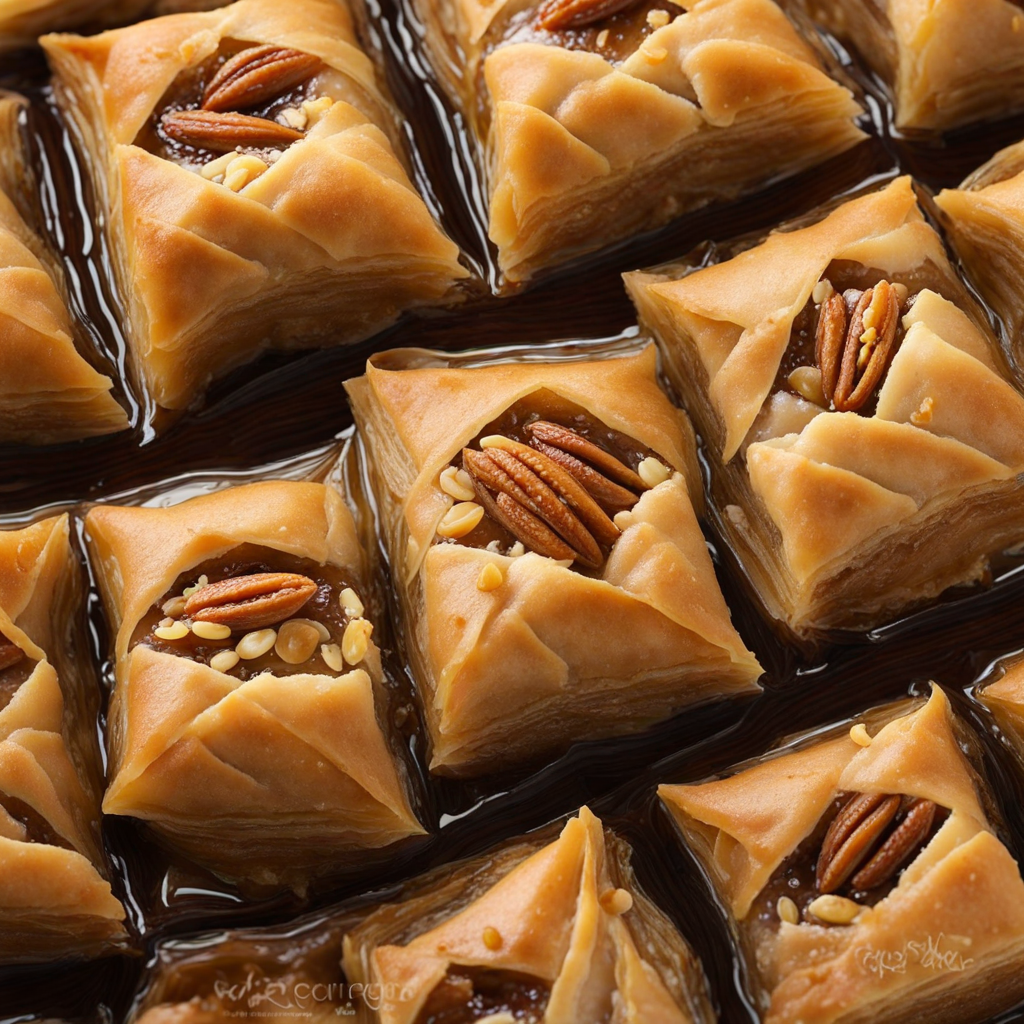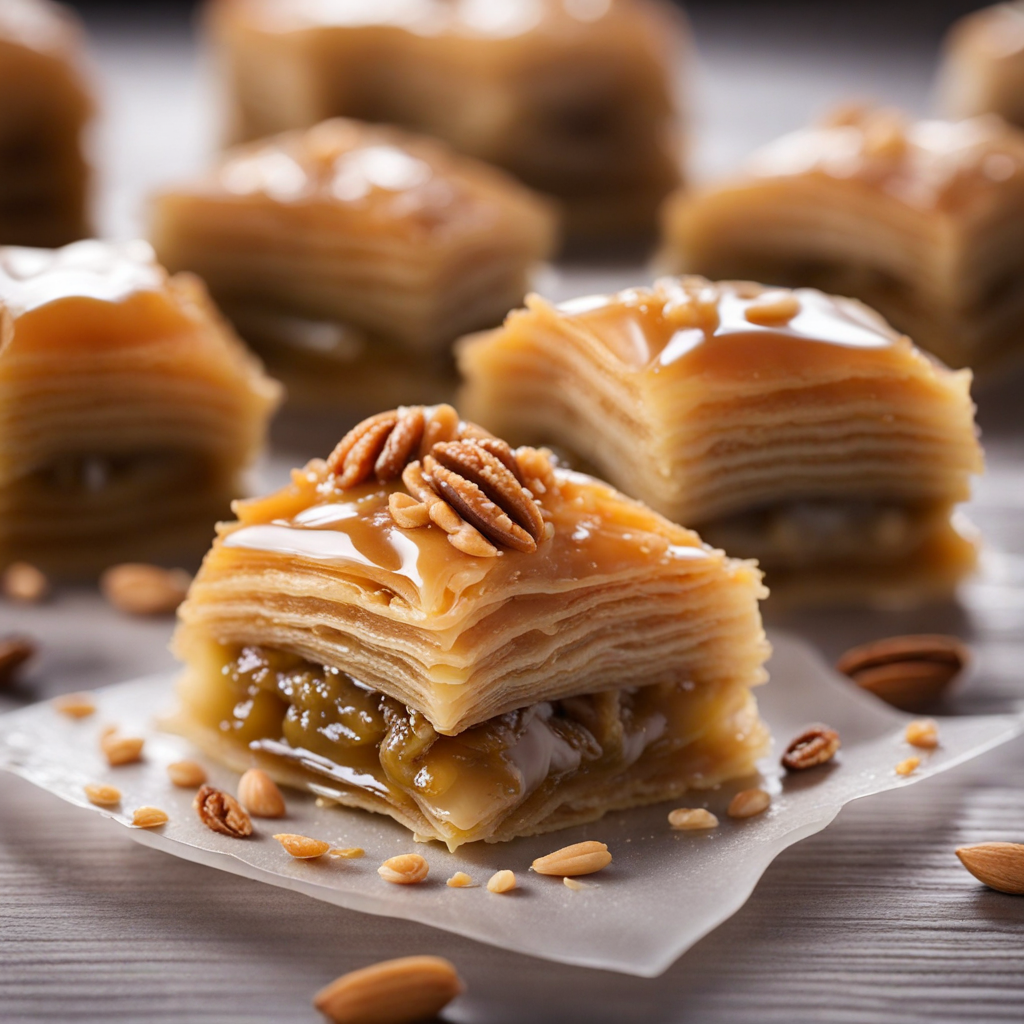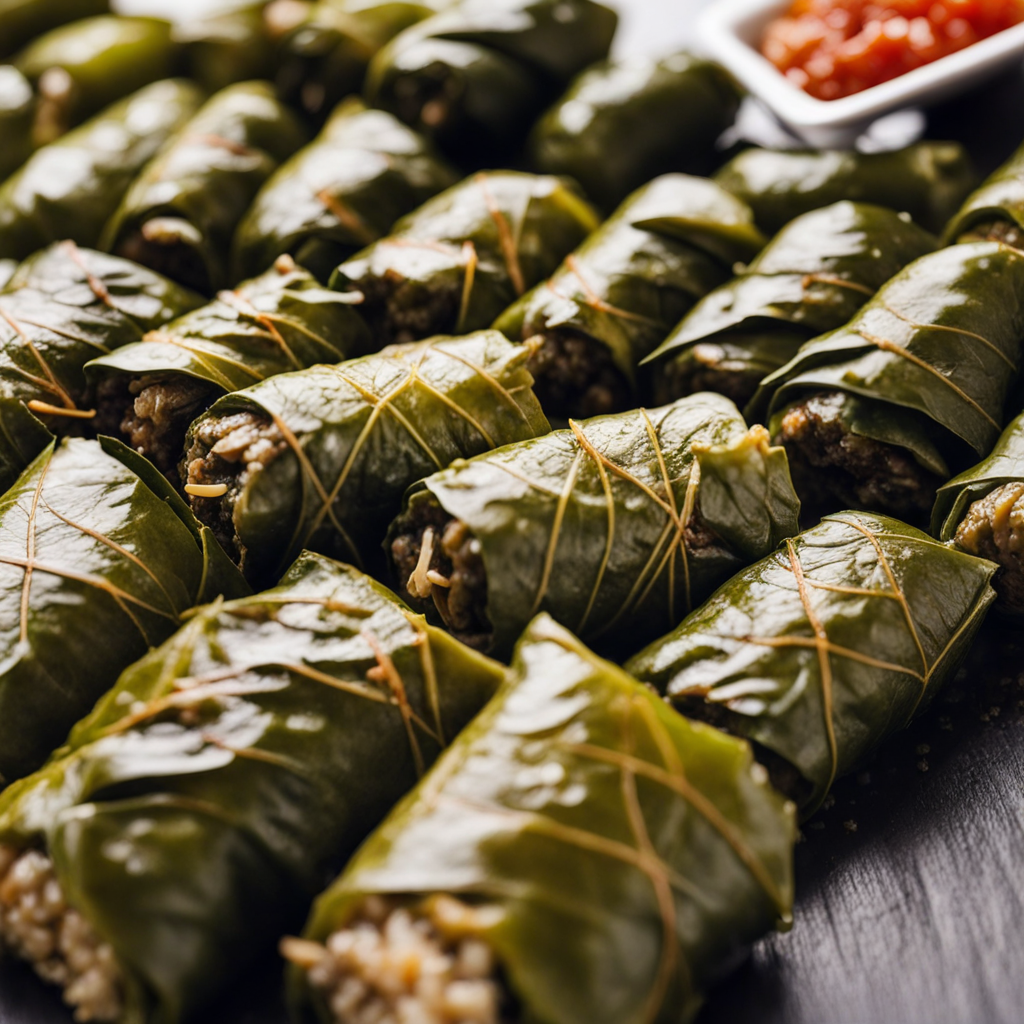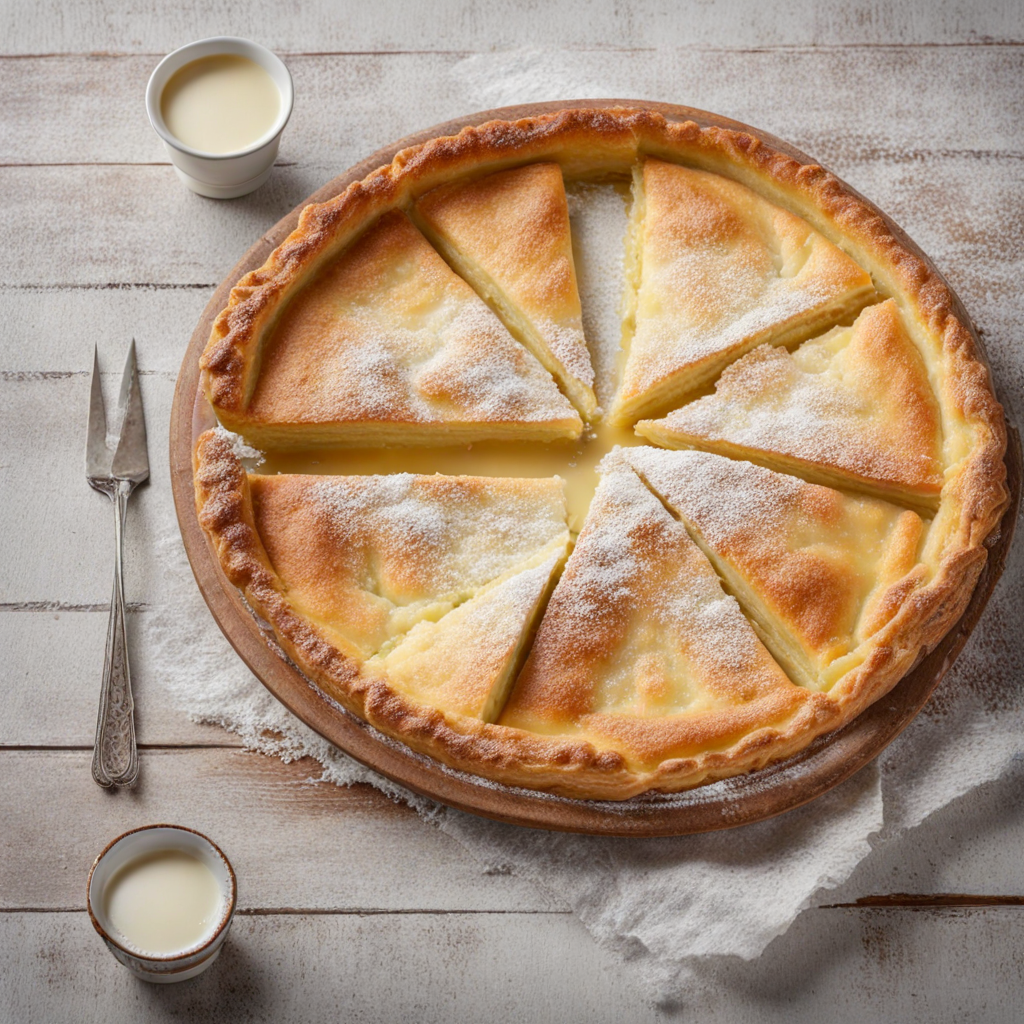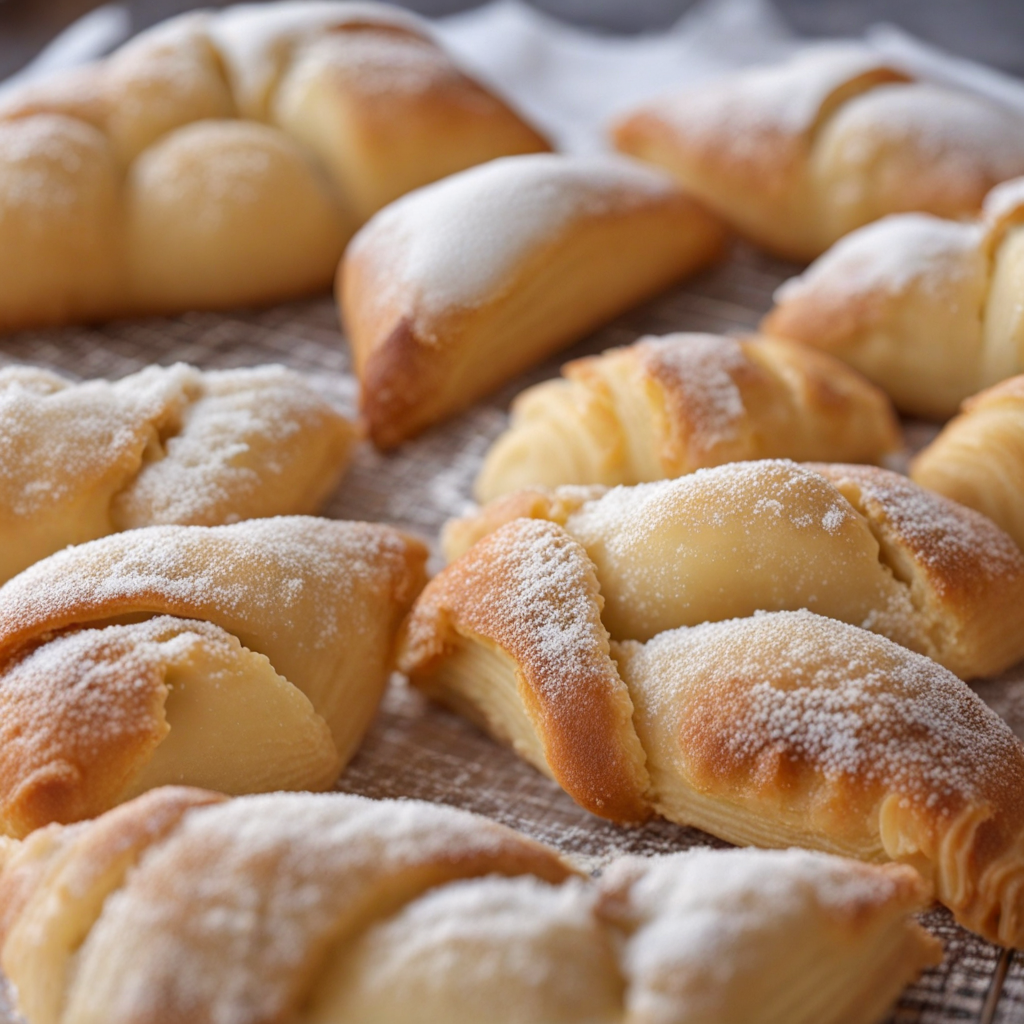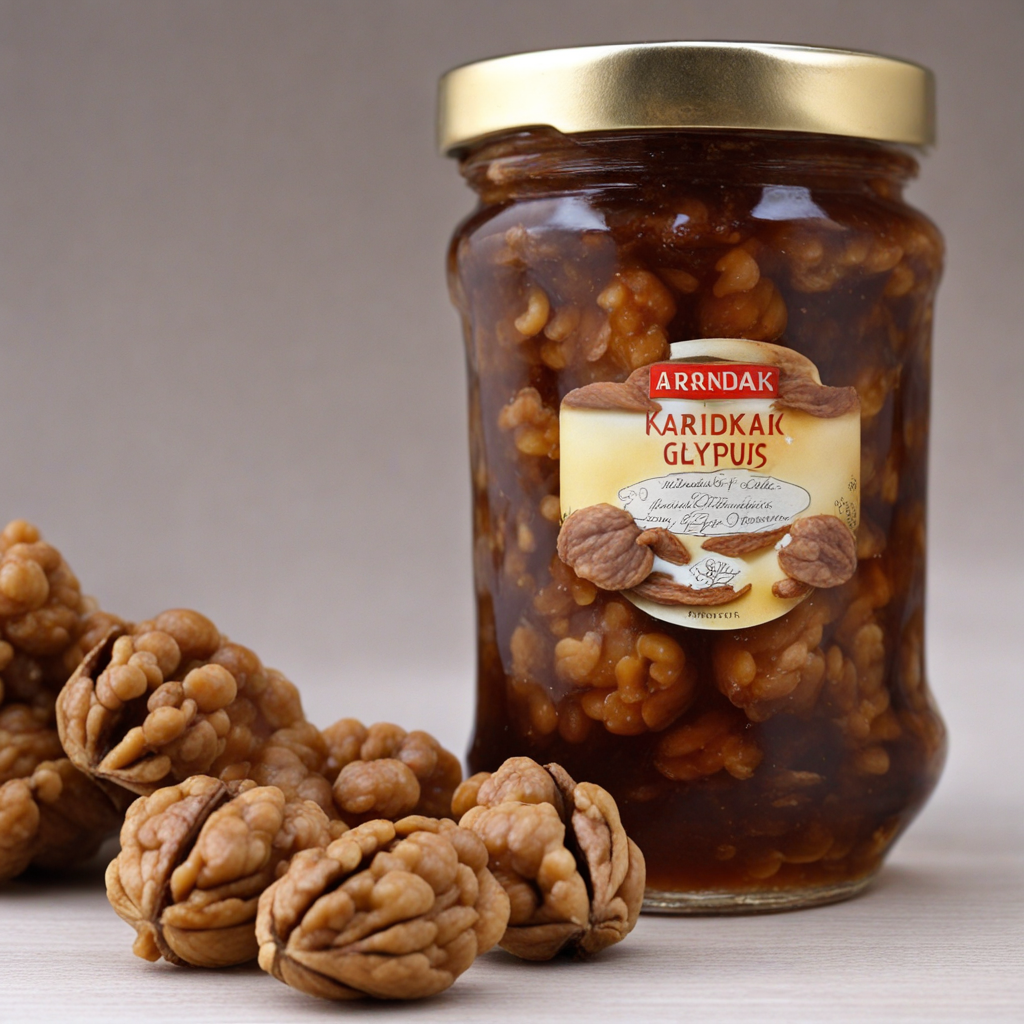Baklava
Baklava is a luscious pastry that hails from Cyprus, known for its rich, sweet flavor and delicate texture. This delectable dessert is made by layering thin sheets of phyllo dough, which are brushed with melted butter to create a flaky and crisp exterior. The layers are interspersed with a mixture of finely chopped nuts, typically walnuts or pistachios, and sweetened with a generous amount of sugar and aromatic spices such as cinnamon. Once baked to golden perfection, the baklava is generously drizzled with a syrup made from honey, sugar, and water, infusing the pastry with a delightful sweetness and a glossy finish. Each bite of baklava offers a harmonious blend of textures and flavors, with the crunch of the phyllo contrasting beautifully with the tender, nutty filling. The syrup adds an irresistible stickiness that enhances the overall experience, making it a truly indulgent treat. Traditionally served in diamond or square-shaped pieces, baklava is often enjoyed alongside a cup of strong coffee or tea, perfect for balancing its sweetness and elevating the tasting experience. In Cyprus, baklava is not just a dessert; it is a symbol of hospitality and celebration. Whether enjoyed at family gatherings, festive occasions, or simply as an afternoon snack, this dessert brings people together. The rich cultural heritage of Cyprus is reflected in every bite, making baklava a must-try for anyone looking to explore new and exciting flavors. Its unique combination of ingredients and textures makes it a timeless classic that continues to delight palates around the world.
How It Became This Dish
The History of Μπακλαβάς (Baklava) in Cyprus Introduction The delectable dessert known as Μπακλαβάς (Baklava) is a rich, sweet delicacy that has captured the hearts and palates of many around the world. While its origins are often debated, Cyprus holds a unique position in the history and evolution of Baklava, reflecting a tapestry of cultural influences, culinary traditions, and historical narratives. This article delves into the origins, cultural significance, and development of Baklava in Cyprus, showcasing its journey through time. Origins of Baklava The roots of Baklava are complex and intertwined with various cultures, primarily the Ottoman Empire, the Middle East, and the Mediterranean region. Its exact origins are murky, but many food historians trace its lineage back to ancient Mesopotamia, with early forms of layered pastry being produced by the Assyrians around 8,000 B.C. These early pastries were filled with nuts and honey, resembling what we now recognize as Baklava. The modern form of Baklava, characterized by thin layers of phyllo dough filled with chopped nuts and sweetened with syrup or honey, is believed to have crystallized during the Byzantine era. The Greeks played a significant role in developing the dessert, and it was during the expansion of the Ottoman Empire that Baklava transformed into a national dish of Turkey, with regional variations emerging across the empire's vast territories. Baklava in Cyprus: A Cultural Mosaic Baklava's introduction to Cyprus coincided with the island's tumultuous history, marked by various occupations and influences, particularly from the Ottomans, who ruled Cyprus from 1570 to 1878. The Ottomans brought with them a wealth of culinary traditions, including Baklava, which rapidly became integrated into Cypriot cuisine. In Cyprus, Baklava is not merely a dessert; it is a symbol of hospitality and festivity. Traditionally served during special occasions such as weddings, religious holidays, and family gatherings, Baklava embodies the warmth and generosity of Cypriot culture. The act of preparing and sharing Baklava is often accompanied by storytelling and familial bonding, making it a cherished ritual. Cultural Significance Baklava in Cyprus has transcended its status as a mere sweet treat to become a cultural emblem, reflecting the island's diverse heritage. The dish is a fusion of flavors and techniques from various cultures, including Greek, Turkish, and Arab influences. This melding of culinary practices illustrates Cyprus's position as a crossroads of civilizations, making Baklava a symbol of unity amidst diversity. The significance of Baklava extends beyond its taste; it encapsulates the island's history of coexistence among different ethnic groups. In both Greek Cypriot and Turkish Cypriot communities, Baklava is enjoyed and celebrated, serving as a reminder of the shared culinary heritage that exists despite political and social divisions. It has become a common thread in the fabric of Cypriot identity, illustrating how food can foster connections and understanding. Development Over Time The evolution of Baklava in Cyprus has been shaped by numerous factors, including regional ingredients, historical events, and changing culinary trends. The basic components of Baklava remain consistent: layers of phyllo dough, a mixture of nuts (commonly walnuts or pistachios), and a syrup made from honey and sugar. However, variations in preparation and presentation reflect local tastes and customs. In Cyprus, the traditional preparation of Baklava involves a labor-intensive process, with the phyllo dough being handmade and rolled out to an almost translucent thinness. The filling is often enhanced with the addition of spices such as cinnamon or cloves, imparting a unique flavor profile that distinguishes Cypriot Baklava from its counterparts in other regions. One notable variation is "Karpatka," a pastry made with similar components, typically presented in a layered form. This demonstrates the adaptability of Baklava's recipe, as it has evolved to include local ingredients and preferences while preserving its core essence. The 20th century brought about significant changes in the culinary landscape of Cyprus, particularly after the island's independence in 1960. Globalization and tourism introduced new influences, leading to a broader appreciation of Baklava beyond traditional settings. It became a staple in bakeries and restaurants catering to tourists, further solidifying its status as a signature dish of Cypriot cuisine. Modern-Day Baklava Today, Baklava continues to be a beloved dessert in Cyprus, enjoyed by locals and visitors alike. It is often found in various establishments, from traditional sweet shops to modern cafes, each offering their unique take on the classic recipe. The rise of food tourism has also played a role in popularizing Baklava, with food enthusiasts seeking authentic experiences that highlight the island's culinary heritage. Moreover, the appreciation for Baklava has grown worldwide, with many international variations emerging, such as the Greek Baklava with its distinct layering technique and the Turkish version that showcases different nut fillings. This global embrace of Baklava has not only elevated its status but has also fostered a renewed interest in traditional Cypriot recipes and food practices. Conclusion The history of Μπακλαβάς (Baklava) in Cyprus is a narrative woven with threads of cultural exchange, historical significance, and culinary artistry. As a symbol of hospitality and festivity, Baklava transcends its role as a dessert, embodying the rich tapestry of Cypriot identity. From its ancient origins to its modern-day iterations, Baklava stands as a testament to the island's diverse heritage and the enduring power of food to bring people together. As we savor this sweet treat, we are reminded of the stories, traditions, and connections it represents—an edible bridge linking the past with the present and the diverse cultures that have shaped Cyprus. Whether enjoyed during a festive celebration or as a simple indulgence, Baklava remains a cherished part of the island's culinary legacy, a delicious slice of history that continues to delight generations.
You may like
Discover local flavors from Cyprus


